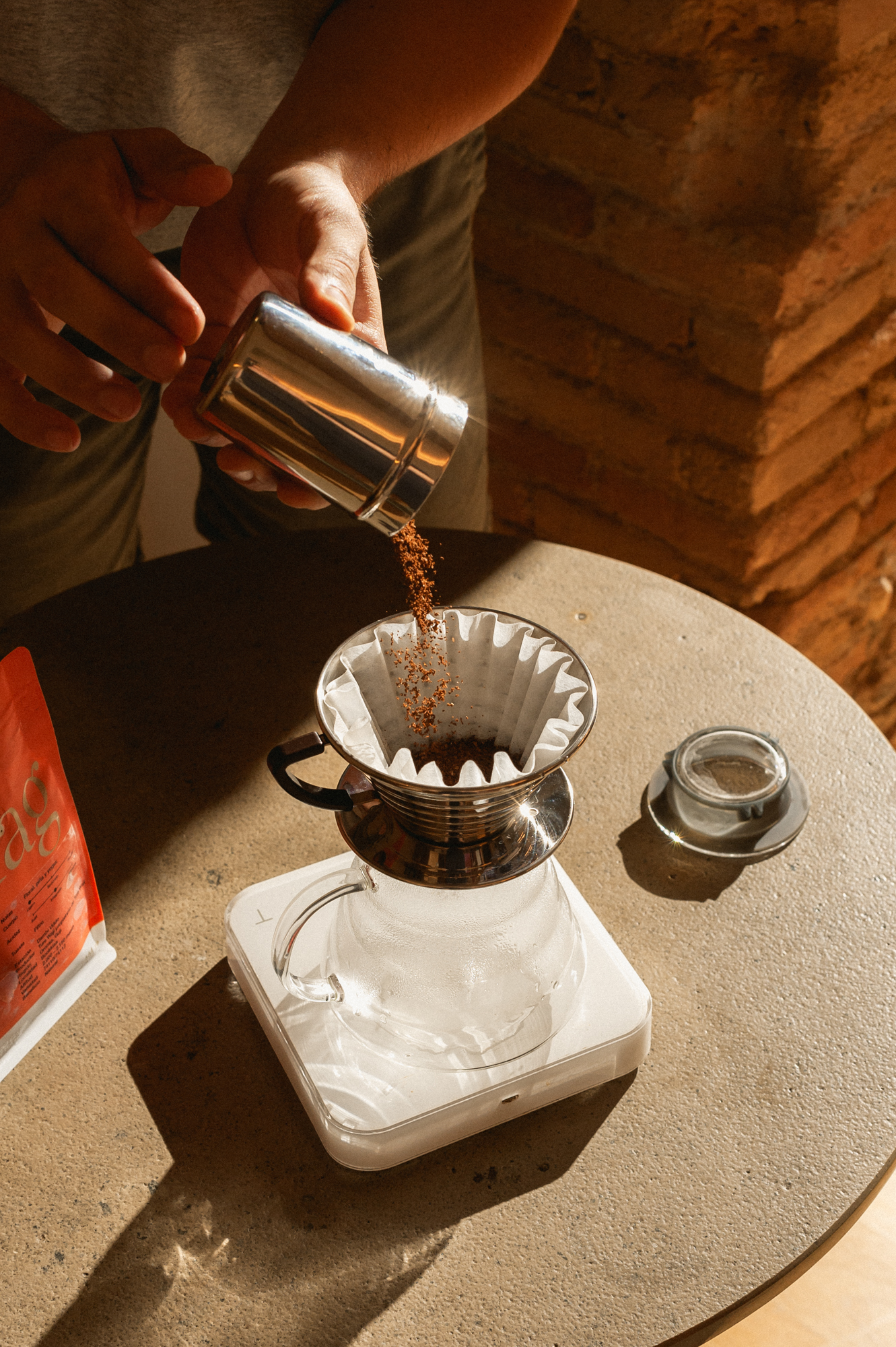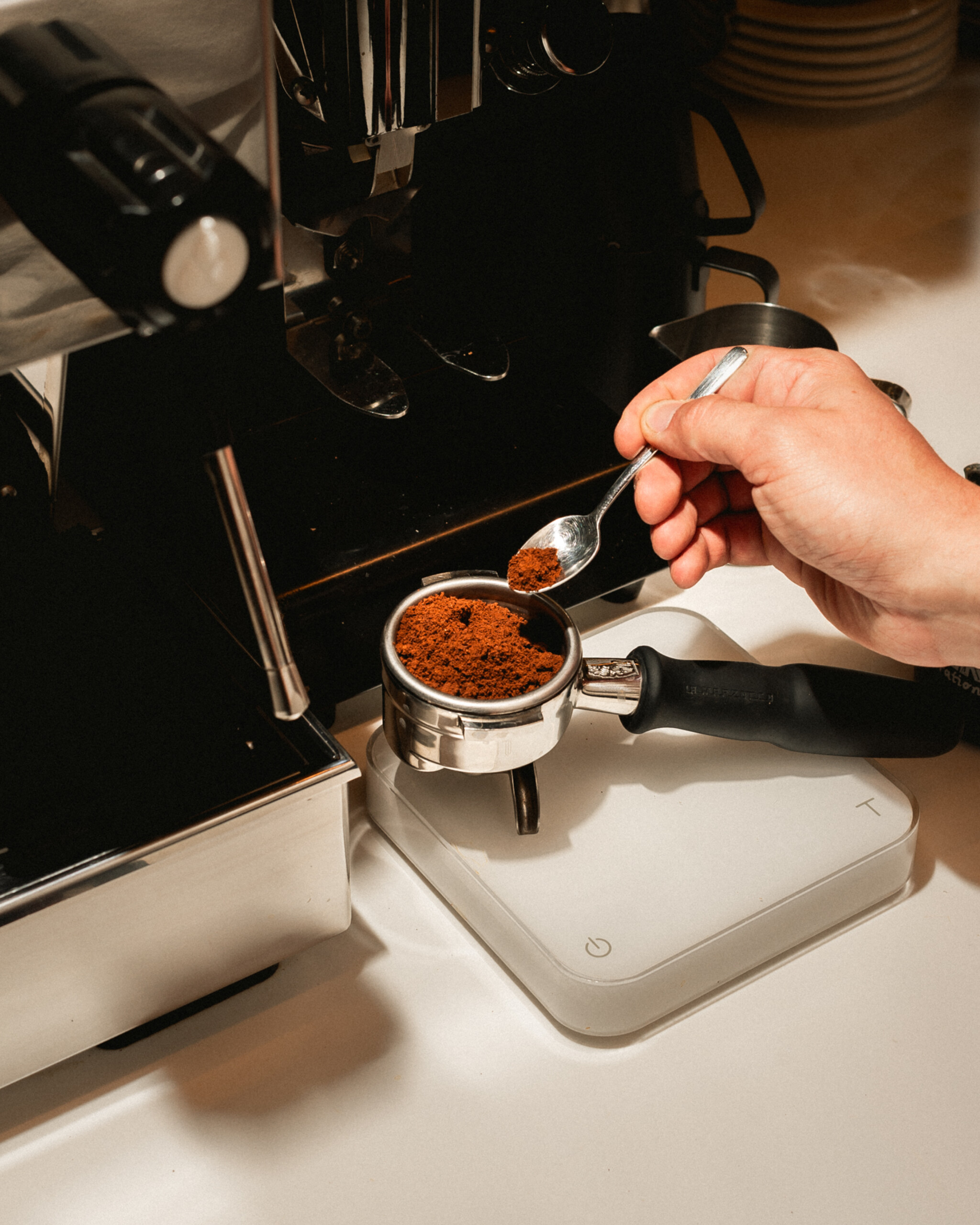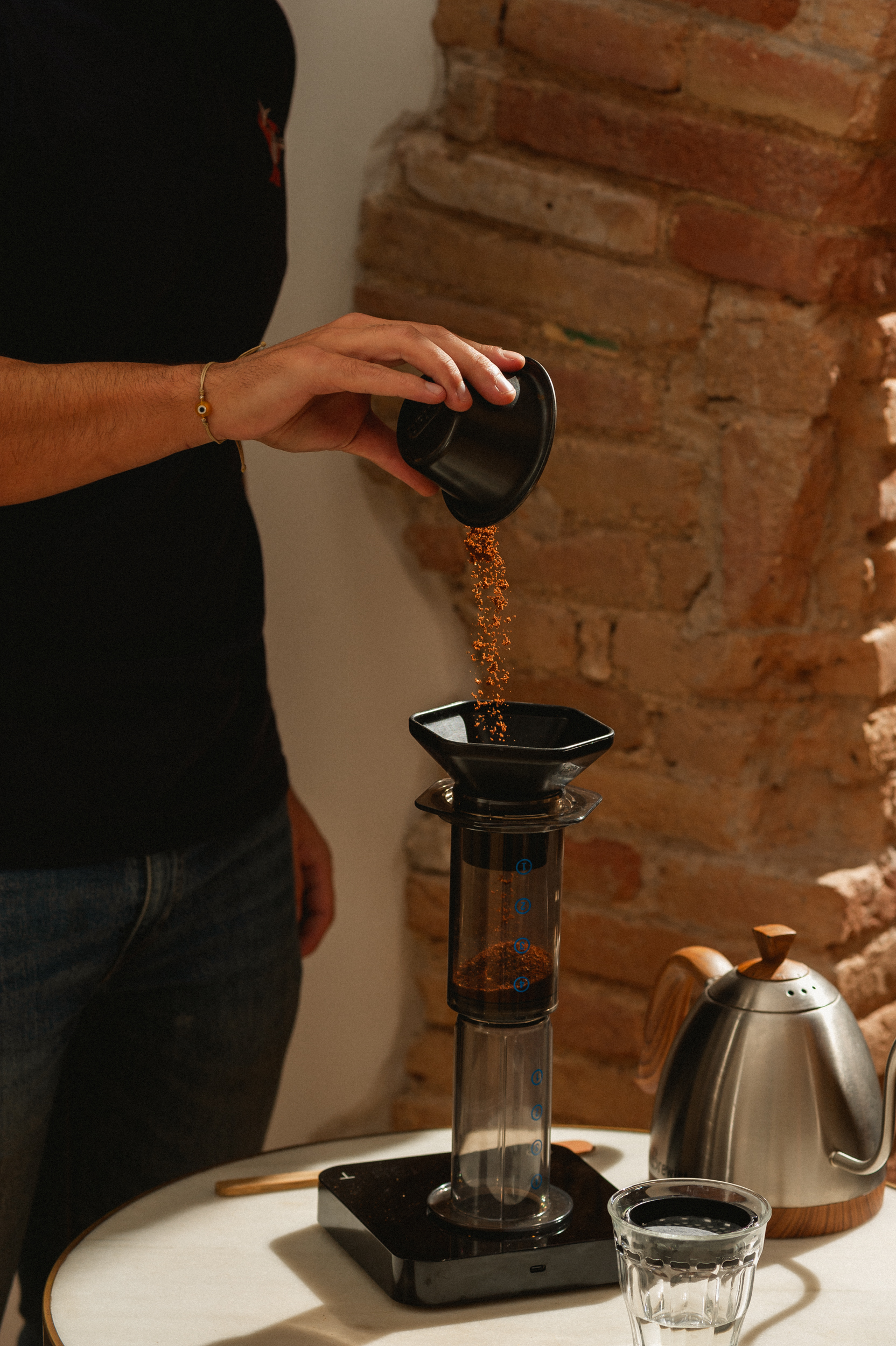
Choosing the right coffee for you isn’t just about the origin, roast, or sensory profile, but also the type of coffee maker you use. And yes, to make a good cup of coffee, you must first know the correct grind. Thus, the grind is not the same for an Italian coffee maker as it is for a French press. Here, we’ll help you decipher which type of grind to buy so you can enjoy coffee with the best aroma and flavor, without complicating things.
Not all ground coffees are the same
The world of ground coffee is vast: fine, medium, and coarse; natural ground coffee, blended ground coffee, supermarket ground coffee, and specialty ground coffee. But if you really want to get the most out of every cup, the first step is choosing the right grind for your coffee maker.
The grind size directly influences the extraction. If it’s too fine, the coffee can be bitter or overly intense, even burnt. If it’s too coarse, it’s bland or watery. The right choice not only enhances the flavor but also allows you to explore new nuances in each variety.
Additionally, each type of coffee maker requires a specific grind to optimize the extraction of the bean’s oils and flavors. Making espresso in an automatic machine is not the same as brewing filter coffee in a Chemex . Therefore, it’s essential to know which grind works best for your preferred method.
Types of grinding and preparation methods
1. Italian coffee maker (Moka)
- Ideal grind: medium-fine
- Recommended profile: notes of chocolate, nuts and a touch of sweetness.
This classic method, present in many European cuisines, stands out for its simplicity and intense flavor. It’s key to use a medium-fine grind here, as too fine a grind could clog the valve, and too coarse a grind won’t generate the proper pressure. From Mexico to Peru, medium-roasted Latin American coffees are always a winner.
2. Espresso coffee maker (manual or automatic)
- Ideal grind: fine
- Recommended profile: chocolatey, sweet or fruity, depending on the origin.
Espresso machine is ideal for those looking for intensity and complexity in a short cup. In this case, the precision of the grind is everything. It’s best to buy espresso -grade coffee from specialty stores or roasters who offer it tailored to the method. You can also choose between a natural ground coffee for cleaner flavors, or a blend of different origins if you prefer more body or are a fan of coffee with milk.
3. Filter coffee maker (V60, Chemex , Melitta )
- Ideal grind: medium
- Recommended profile: floral, fruity, sweet and spicy notes.
Filter coffee makers allow you to enjoy a lighter brew, perfect for those who prefer a smooth, clear flavor where floral aromas and fruity flavors shine. Here, the grind should be medium and uniform to avoid under- or over-extraction. The more precise the grind, the better the grinder, the better the coffee’s sensorial qualities will be expressed.
With this method, it’s best to avoid industrial or dark-roasted coffees. Look for coffee from a light origin, freshly roasted, and with a profile description on the label. This makes a big difference if you want a more aromatic coffee with subtle nuances.
4. French Press
- Ideal grind: coarse
- Recommended profile: chocolate, walnut, intense body.
The French press allows you to fully extract oils and compounds from the coffee, producing a full-bodied, richly textured beverage. Here, the ground coffee particles are extracted by immersion, so it’s essential to avoid ground coffee grounds in the cup, which would leave a “cloudy” mouthfeel. Therefore, it’s crucial to use a coarse and uniform grind.
5. Automatic coffee maker (with or without grinder)
- Ideal grind: fine, like espresso .
- Recommended profile: medium-full body, sweet, chocolatey notes.
Automatic coffee machines, increasingly present in homes and offices, offer convenience and speed. If your machine doesn’t have a built-in grinder, be sure to purchase ground coffee specifically for this type of coffee maker. There are ground coffee options designed to provide intensity without losing balance.
Here, more than ever, it is important to choose a coffee roasted specifically for this type of coffee maker, which ensures greater solubility of the beans.

How to choose between ground coffees on the market
The variety of ground coffees on the market is enormous. From supermarket brands to specialty roasters with unique profiles and precise roasting dates. So how do you know which one to choose?
- Decide your coffee maker type. Each method requires a specific grind. Before purchasing, check the packaging to see which method is indicated for the grind.
- Choose the profile you like. Do you like your coffee strong and full-bodied, or do you prefer a smooth flavor ? Generally speaking, African coffees tend to be fruity and bright, while Central and South American coffees are more chocolatey and rounded.
- Check the information on the packaging. Roasting date, origin, variety, process, and tasting notes are good indicators of quality.
- Opt for fresh coffee. If you don’t have a grinder, choose freshly ground coffee in containers with a one-way valve, or better yet, have it freshly ground specifically for your type of coffee maker.
- Compare prices wisely. Good coffee doesn’t have to be the most expensive. There are excellent value options both in physical stores and online.

Enjoying a well-prepared coffee starts with a good choice
Having a good cup of coffee isn’t just a routine: it can become a small daily ritual to enjoy the moment. Whether alone in the morning, after lunch, or in good company, enjoying a quality cup of coffee is one of the simplest and most rewarding daily pleasures.
And to achieve this, the first step is to adapt the grind to the preparation method. The second is to choose a coffee that suits your palate.
Finally, remember that coffee is a living product: it evolves over time, and its flavor changes depending on freshness, storage, and, of course, the extraction method. Experiment, try different combinations, and find that exact point where everything is balanced: aroma, body, acidity, and flavor.